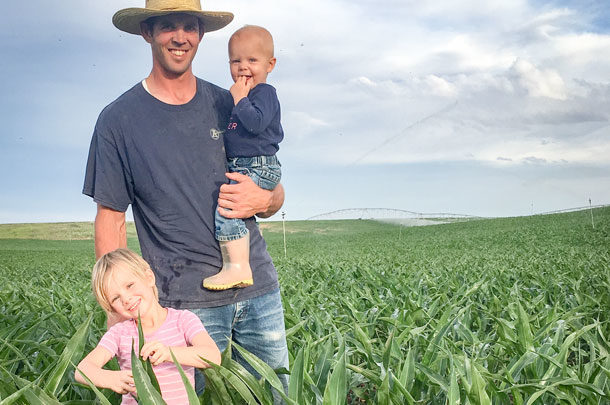As I speed-read my way through a few forums and articles, I realized most farmers consider that idiom antiquated. Many said they would be exceptionally disappointed if that was the benchmark their corn hit. Interesting. As I write this, today is July 1. In southern Idaho, our corn is 2 feet tall – hitting about to my husband’s knees. And when we compare it to our neighbors, we are right on track. As amateur corn growers, we felt fairly pleased with this success.
It’s not on track to our neighbors in Iowa, however. As the number one corn-producing state in the country, in some parts their corn is 6 feet tall. Apparently, the song from the musical Oklahoma better describes their crop: “corn as high as an elephant’s eye” (by the Fourth of July). To put this in perspective, I had to look it up. The average size of an elephant is 10 feet tall. That’s some corn.
A Northeastern farmer said the phrase actually came from colonial times and meant knee-high by the 4th of July to a man sitting on a horse. Again, to put it into perspective, I did some guesstimating. Given the average size of a horse, we are expecting corn at least 4 feet tall. Fortunately, on our farm, we’re not expected to meet either of those standards.
Maybe for you this is old news, but for this born-and-bred Idaho girl, the regional differences are fascinating. For you Midwestern farmers, when your great-grandparents were throwing around this phrase it was before the days of specialty hybrids, fungicides, herbicides and high-octane fertilizers – the days when corn yields were 20 bushels an acre. We all know that farming now is “just” a little different.
For those of us who live in the desert conditions of the West, growing corn on a production scale was likely not even feasible a hundred years ago, even with irrigation. Our climate, elevation and soil types just made it incompatible. With agricultural advancements, growing corn and more is possible; we can even double-crop.
By the time this is actually being read, sometime in the middle of July, the corn will likely double in height, and we will be in the heydays of summer. Thinking of heyday, I bet it has its roots in the Farmers Almanac as well, but that will have to be a discussion for another day. ![]()
Erica Louder is a freelancer based in Idaho.
PHOTO: “Knee-high by the Fourth of July” might just depend on the height of the knees. Erica Louder’s family stands in a cornfield in southern Idaho. Photo by Erica Louder.












